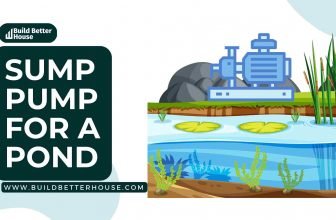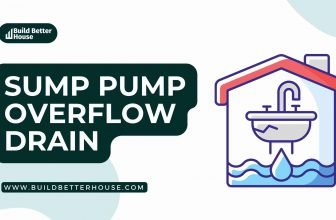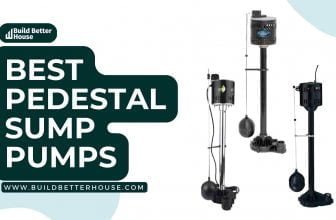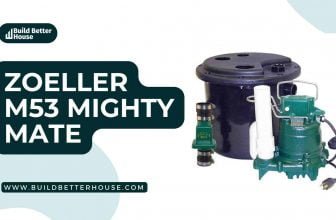How Much Electricity Does A Sump Pump Use? Find Out

Sump pumps have always protected your flooded basement during the springtime downpours. In those situations, a sump pump is necessary. But did you ever pause to consider how much electricity does a sump pump use?
The electricity consumption of various sump pump models varies. Smaller pumps consume less electricity per hour than larger pumps with motors of more horsepower. Sump pumps still drain some power from the outlet while not in use, but they need far more when pumping water.
In this article, we will review exactly how much electricity does a sump pump use – keep reading to find out more!
How Much Electricity Does A Sump Pump Use?
As previously mentioned, sump pumps are lifesavers, particularly when shielding your home from flooding. However, this action does have a cost. Every other form of sump pump operates on electricity, as opposed to those that use water, which can have a considerable impact on your monthly bills.
To determine how much electricity a sump pump uses, one must be aware of the model type, the internal motor horsepower, and the number of operational hours.
A larger pump will consume more electricity than a pump with less horsepower. Moreover, you will probably pay less if your pump is relatively inactive.
How Much Does a Sump Pump Cost to Run in Electricity?
Smaller sump pumps won’t significantly hurt your budget in terms of operating costs. Sump pumps typically cost around $0.12 per kWh (Kwh). Consequently, a 1/4 HP or a 1/3 HP pump will cost between $10 and $20 per month if you consider the bill during the dry season.
However, if you use a sump pump with more horsepower, for example, 1 HP or more, the sump pump’s electricity cost might increase to $40 per month.
Do Sump Pumps Consume More Electricity?
The sump pump’s running hours can vary significantly depending on the season. Your sump pump won’t run much in the summer, but it will constantly run in the winter or during a wet season.
It is also essential to consider where your residence is situated geographically. Water will almost certainly try to seep into your basement if you live in a low-lying location or next to a significant water body.
Additionally, the power requirements for various sump pump models vary. Therefore, look at the chart below to observe the differences in power consumption based on the pump’s horsepower and find out how much electricity does a sump pump uses.
| Sump pump (Horsepower) | Power consumption |
| 1/4 HP Pump | 456 watts |
| 1/3 HP Pump | 480 watts |
| 1/2 HP Pump | 900 watts |
| 3/4 HP Pump | 100 volts |
| 1 HP Pump | 120 volts |
Your sump pump may be overworking for other reasons as well. Consider a float switch that is stuck. Dirt and debris will gradually accumulate in a sump pit that is not maintained. The pump may occasionally run even though the pit is empty since the float switch occasionally gets stuck at a specific height.
How Much Electricity Does a Sump Pump Use at Home?
The monthly energy consumption of a residential sump pump can be around 10 kWh. For starting and stopping the internal motor, they might need more energy. A strong sump pump is typically where this occurs.
More power is required to start and stop an engine with higher horsepower. Moreover, your pump may need more electricity if the check valve’s height is too high.
How Can I Lower Sump Pump Electricity Consumption?
Avoid Oversizing The Pump
Engineers usually specify pumps conservatively, allowing for a margin of safety between the workload of the specified pump and that required by the application.
It is well known that centrifugal pumps, which make up around 80% of all installed pumps, are frequently oversized by 20% to 30%. An oversized pump might waste energy as it uses more motor power to work at higher flow and pressure levels.
Large HP sump pumps use more electricity than small HP sump pumps.
Variable Frequency Drives
Variable frequency drives adjust the motor’s rotational speed to match the application’s actual head and flow requirements rather than the pump’s capacity.
VFDs are frequently used in two situations to prevent unnecessary electricity consumption: the first is to slow down the motor on a pump that increases during the specification stage.
The second reason a VFD is used is when the pump requires variable duty levels at different times. In such a case, the pump may operate at a lower capacity for lengthy periods, yet it must be able to operate at full capacity when necessary. A cooling pump is an excellent example since the temperature of the apparatus or fluid that needs to be cooled may vary significantly.
Although VFDs are hefty, the energy savings they may offer typically make them worth the investment.
Parallel Pumping Systems
Multiple pumps are a more energy-efficient solution for a system with varying service requirements than VFDs. A single pump may operate outside its Best Efficiency Point for most of its working life when “worst-case” needs are significantly higher than typical operating conditions.
The larger pump would ease the load of operating at a small portion of its maximum capacity by installing a second, smaller pump that is intended to satisfy average system demand.
Carry Out Maintenance
The efficiency of your pump can be impacted by wear, just like any other piece of equipment, so routine maintenance can also help you save money on electricity. Pump maintenance, particularly the replacement of worn wear rings, is essential as larger wear ring clearance causes leakage, requiring more pump power to produce the same flow.
The energy efficiency of a pump can decrease by up to 25% before replacing it. The best way to reduce the long-term energy costs of your pump at this stage is to upgrade it!
Avoid Unnecessary Use
People frequently leave the sump pump switch on when they shouldn’t. When the workload requirements change, the number of pumps running can adjust using pressure switches and control systems.
It is possible to use control systems to shut down pumps, such as standby pumps, when they are not in use.This can save money on electricity by preventing many pumps from operating simultaneously when the system only needs one.
Conclusion
One of the best methods to safeguard your house and family from water damage, including flood damage, is using sump pumps. Therefore, if you reside in a low-lying area, purchase a sump pump.
It’s also critical to be aware of how much electricity does a sump pump use, regardless of whether you choose a water-powered or electric model. The more information you have, the easier it will be to select a sump pump confidently without worrying about electricity consumption.
What is the amp draw of a 1 HP sump pump?
9.8 to 10 amps are required to power a 1 HP sump pump. Thus, a 1 HP motor sump pump should be capable of transporting 10 amps of power.
How many amps does a sump pump with 1/3 horsepower consume?
Power consumption for a 1/3 horsepower sump pump is 3.7 amps. Installing a 1/3 HP sump pump requires an electrical output that can move 3.7 amps of current.
How much electricity does a sump pump use?
Large HP sump pumps use more electricity than small HP sump pumps. Consumption depends mainly on the HP of the motor. Sump pumps with larger HP consume more electricity than smaller HP sump pumps.
How much electricity does a sump pump use for a 1HP Submersible?
A submersible water pump’s power level of 1 hp is roughly equivalent to 746 watts (W) or 0.746 kilowatts (kW).
FAQ
What is the amp draw of a 1 HP sump pump?
9.8 to 10 amps are required to power a 1 HP sump pump. Thus, a 1 HP motor sump pump should be capable of transporting 10 amps of power.
How many amps does a sump pump with 1/3 horsepower consume?
Power consumption for a 1/3 horsepower sump pump is 3.7 amps. Installing a 1/3 HP sump pump requires an electrical output that can move 3.7 amps of current.
How much electricity does a sump pump use?
Large HP sump pumps use more electricity than small HP sump pumps. Consumption depends mainly on the HP of the motor. Sump pumps with larger HP consume more electricity than smaller HP sump pumps.
How much electricity does a sump pump use for a 1HP Submersible?
A submersible water pump’s power level of 1 hp is roughly equivalent to 746 watts (W) or 0.746 kilowatts (kW).






